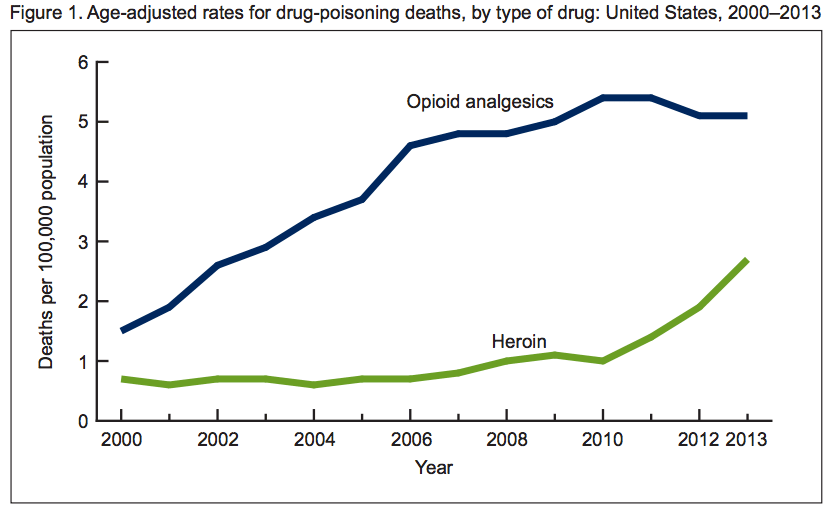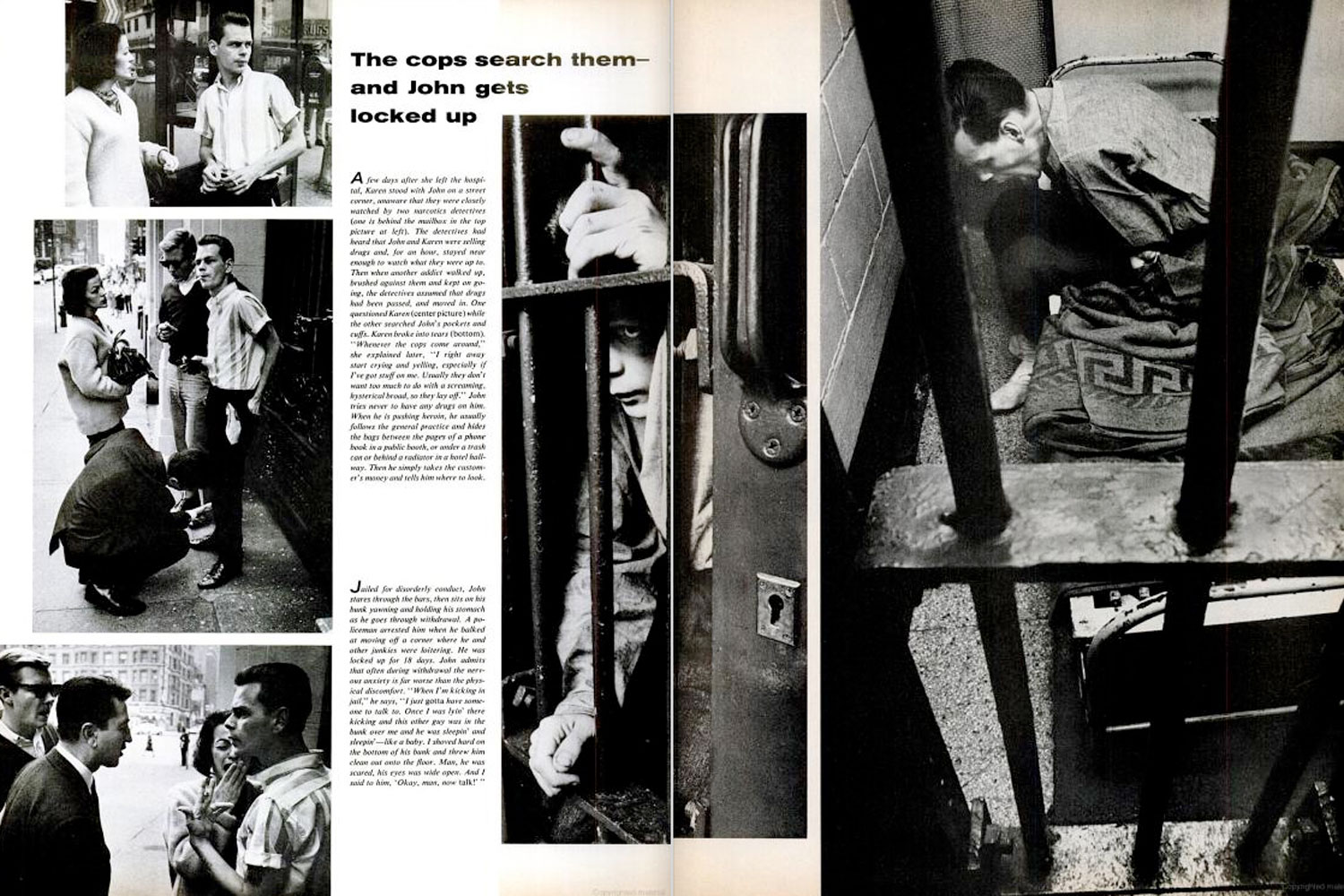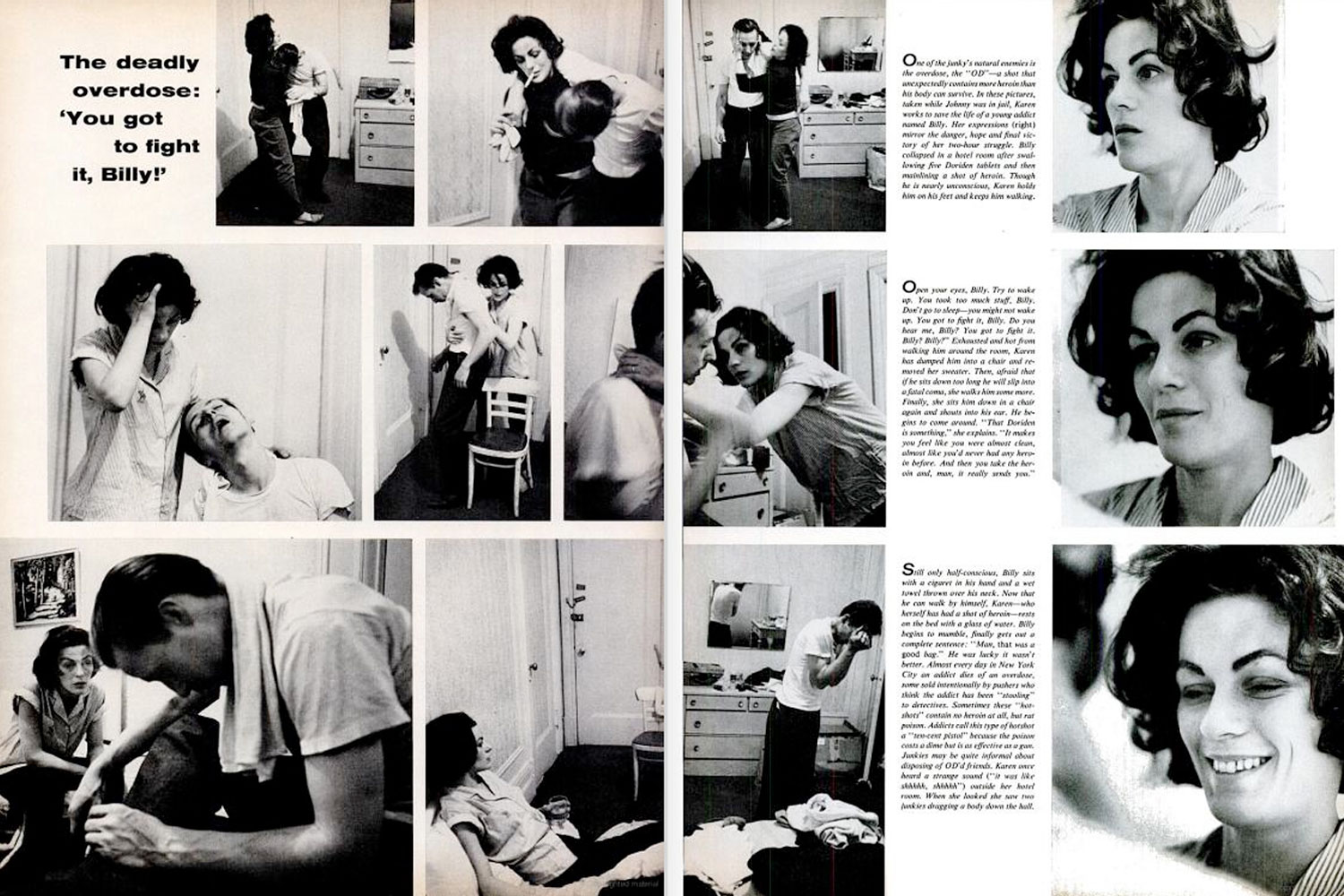Correction appended, March 5
Heroin-related deaths nearly tripled in the U.S. within just three years and quadrupled in 13, according to new federal data.
The new report from the National Center for Health Statistics (NCHS) shows that from 2000 to 2013, drug-poisoning deaths involving heroin increased fourfold, from 0.7 deaths per 100,000 people to 2.7 deaths per 100,000 people. The rate was about four times higher among men than among women in 2013.
Heroin-related drug-poisoning deaths have increased in all age groups, races and ethnic groups, the data show. Every region in the U.S. also experienced an increase, and the Midwest experienced the biggest jump.
One reason for the spike is America’s growing painkiller problem. The NCHS released another report last month showing that significantly more people over age 20 are using opioids. The number of people who used a painkiller stronger than morphine increased from 17% to 37% from the early 2000s to about a decade later.

People who are hooked on painkillers may make the switch to heroin since it’s cheaper and doesn’t need a prescription, according to Dr. Andrew Kolodny, the chief medical officer of the Phoenix House, a national nonprofit drug and alcohol-rehabilitation organization. Both drugs come from the opium poppy and therefore offer a similar high. “We are seeing heroin deaths sky rocketing because we have an epidemic of people addicted to opioids. There are new markets like suburbs where heroin didn’t used to exist,” says Kolodny. (He was not involved in the research.)
'Two Lives Lost to Heroin': A Harrowing, Early Portrait of Addicts









MORE Why You Don’t Know About the Heroin Vaccine
Prior data from the Centers for Disease Control and Prevention show that painkillers are a growing problem. In 2014, the CDC reported that physicians wrote 259 million painkiller prescription in a single year — the equivalent of a bottle of pills per American — and almost 50 Americans die every day from a prescription-painkiller overdose. The agency recommends that states run prescription-drug prescribing databases to track overprescribing and consider policies that reduce risky prescribing practices.
As states and the White House struggle to tackle opioid addiction, some experts are skeptical about whether such efforts are enough to solve the problem. “We are dealing with the worst drug epidemic in our history,” says Kolodny. “There’s no evidence it’s plateauing.”
Read next: Ohio Steps Up Fight Against Heroin Deaths
Listen to the most important stories of the day.
Correction: An earlier version of this article misstated the timeline of the U.S. heroin-related death rate.
More Must-Reads from TIME
- Caitlin Clark Is TIME's 2024 Athlete of the Year
- Where Trump 2.0 Will Differ From 1.0
- Is Intermittent Fasting Good or Bad for You?
- The 100 Must-Read Books of 2024
- Column: If Optimism Feels Ridiculous Now, Try Hope
- The Future of Climate Action Is Trade Policy
- FX’s Say Nothing Is the Must-Watch Political Thriller of 2024
- Merle Bombardieri Is Helping People Make the Baby Decision
Contact us at letters@time.com